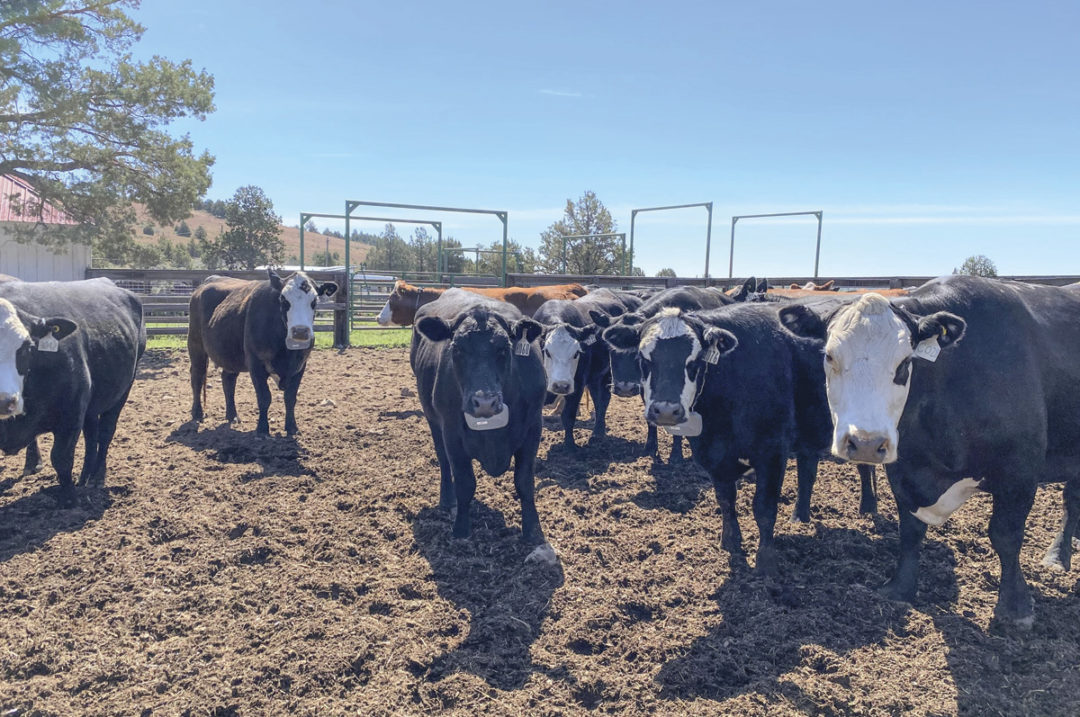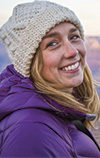Rangeland scientists at the Eastern Oregon Agricultural Research Center (EOARC) tested whether virtual fencing could prevent cattle from grazing recently burned areas within sagebrush steppe pastures. Because changes in climate are expected to increase fire frequency in sagebrush steppe, ranchers and rangeland managers will need new, cost-effective methods of separating cattle from burned areas on public rangelands. Virtual fencing presents a compelling climate change adaptation option.
Burned areas often have a wealth of new, young plants, which are particularly appealing to livestock as forage. However, these young plants can also be sensitive to disturbance from activities like grazing. Disturbance during stages of early development can lead to increased soil erosion and a reduction in native plant species in sagebrush steppe. Proper management of rangeland plants helps to slow the spread of invasive annual grasses and the risk of wildfire.
In the public rangelands of the western U.S., cattle are typically excluded from burned sagebrush steppe pastures for two years after a fire to protect sensitive plants and soil. If only a portion of a pasture burns, the burned area can be fenced, allowing for continued grazing in unburned areas. However, pastures in this region can include thousands of acres, and ranchers may find themselves with limited access to a leased pasture and limited ability to fence large swaths of rangeland. Traditional wire-based fencing is expensive, can impede other management objectives and can be complicated to implement. Virtual fencing is a compelling alternative.
Rangeland scientists Chad Boyd and Rory O’Connor of the USDA Agricultural Research Service (ARS) and Juliana Ranches and David Bohnert of Oregon State University formed the EOARC team for this project. The team evaluated the use of a virtual fence for excluding cattle from burned areas within small pastures in the sagebrush steppe of southeast Oregon, near Burns. Virtual fencing uses satellite-connected collars to contain livestock within GPS coordinates controlled by a rancher or land manager. Livestock are contained using auditory cues (beeps) and electrical pulses, much like those used in a dog shock collar. Gateways, or GPS base stations, use cellular communication to link to the end user and communicate with the collars via low frequency radio transmissions, allowing producers to see their livestock in real time.

Researchers set up “gateways” that track cattle movement through the GPS collars. Photo by Morgan Lawrence.
Climate change impacts of concern
Climate models suggest the Great Basin is expected to become drier with climate change and is expected to increase in highly flammable invasive annual grasses like cheatgrass. Boyd associated an increase in invasive annual grasses with “more fire going forward." In response to increased fire frequency and intensity, ranchers and land managers will need to address post-fire impacts. With fewer obstacles than traditional fencing, virtual fencing could allow cattle to graze on unburned lands while giving recently burned areas time to recover.
Traditional fencing can also heighten wildlife stress, particularly in pronghorn, who are already heavily impacted by the effects of climate change, including drought, higher temperatures and wildfire. Virtual fencing could help to mitigate wildlife stress by minimizing wire fences on the landscape and increasing wildlife mobility.
Implementation
The team began the study by prescribed burning 1.4 acres in six adjacent 5.2-acre pastures in a Wyoming big sagebrush plant community in 2019. In June 2020, all the cows in the study were fitted with virtual fencing collars. Cows were placed into a catch chute, where members of the EOARC team outfitted the cows with collars and drew blood to monitor for stress. For four days following the collaring, the cows were trained to respond to cues within a small, traditionally fenced pasture. The limits of the virtual fence were set narrower than the fenced limits of the pasture, so cows could become accustomed to the cues of the virtual fencing collar.
Then, the cows were brought to their corresponding sagebrush steppe pastures. Each pasture was stocked with three mature, calfless cows for 14 days. The collars were programmed to create a virtual fence around a burned area within three of the pastures, while the remaining pastures had the collar cues turned off for a control group of cows. The collars recorded animal location every five minutes (though they can be set to different time scales depending upon management needs).
Outcomes
Cows in the control pastures that did not receive cues from the collars initially spent up to 40% of their time within the burned area. Nearly 70% of the available forage in the burned area was grazed by the control cows. However, cows in the virtual fencing treatment pastures spent approximately 4% of their time in the burned area on day one and were recorded in the burned area only a few times after. Less than 3% of the forage in the burned area was grazed by cows in the virtual fencing treatment groups.
This trial suggests virtual fencing technology is effective in controlling cattle movements across sagebrush steppe rangelands and can effectively limit the grazing of sensitive burned areas. Virtual fencing could provide land managers and ranchers an option to access unburned areas within burned pastures on public rangelands, while allowing for the restoration of burned areas.

Before turnout, EOARC researchers drew blood to monitor stress. Photo by Morgan Lawrence.
Challenges and opportunities
According to Boyd, “One of the logistical issues is getting the collars on the cows. … It’s something else on the to-do list of already very busy producers.” Purchasing the GPS base station equipment can also be an expensive upfront cost. However, Boyd encouraged producers to “weigh the cost against the lost opportunity cost of grazing” in the event of a burn on leased, public rangeland. However, in Boyd's opinion, virtual fencing has few negatives.
Virtual fencing is not for everyone. Boyd maintains that because it is a new technology, it might be a difficult adjustment for some producers or rangeland managers. However, he believes that with time and research, use of virtual fencing will become more common.
The opportunities associated with virtual fencing are far-reaching and only beginning to be explored. One of Boyd's favorite features is that producers "can see cows in nearly real time from their smartphone, tablet or computers," so long as the collars retain contact with the GPS base stations. Even if cows are in a location with limited connection to the base station, which can happen in hilly or rocky terrain, the technology continues to keep cows contained within GPS limits set by producers.
Boyd notes that “Our notion of animal confinement is dependent on technology. In the absence of virtual fencing, our paradigm of animal confinement is defined by barbed wire fences. Virtual fencing makes this definition [of animal confinement] largely go away. Animal confinement is what you want it to be, and thus puts people in the position of having to think through what they want grazing management to look like rather than simply following the established protocol.” He mentions that this can be intimidating for those who might be accustomed to a generational system of animal rotation. “But,” he says, “now you can change that up!” Virtual fencing gives ranchers and land managers flexibility in their management styles.
For more information, see the project publication from the EOARC team.
The Eastern Oregon Agricultural Research Center is a working ranch and research collaborative that focuses on rangeland ecology and restoration, science-driven livestock systems, forage crops and alternative livestock systems in the sagebrush steppe of the Great Basin and inland coniferous forests of the Pacific Northwest.
This article was originally published on the USDA Northwest Climate Hub website.








